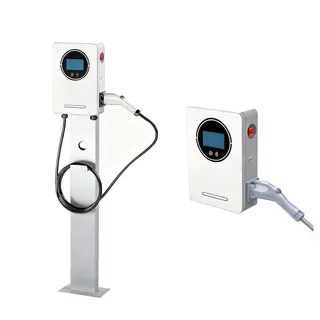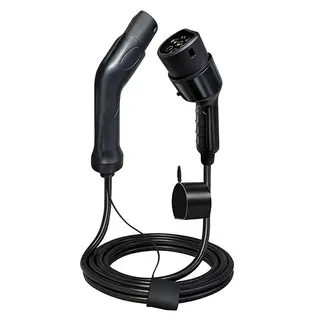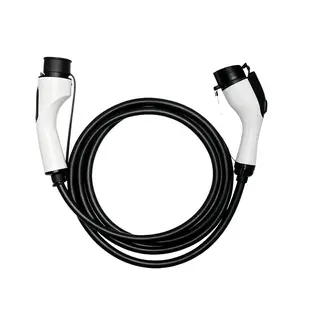With the rise of electric vehicles (EVs) in the global transportation sector, the convenience of the charging experience has become a key factor in driving their widespread adoption. However, the complexity of charging station access, diverse charging networks, and inconsistent payment systems often discourage potential EV owners and frustrate those who have already chosen to drive electric vehicles. Fortunately, the emergence of the Open Charge Point Protocol (OCPP) has brought revolutionary changes to the EV charging ecosystem.
OCPP, or the Open Charge Point Protocol, is an application protocol used for communication between EV charging stations (also called charge points) and EV charging management systems (commonly referred to as EV charging software). It acts as a universal "language" that allows key participants in the EV charging ecosystem to communicate seamlessly. OCPP was initially created in 2009 with the aim of standardizing the interaction between EV chargers and management systems. Among many proprietary protocols, OCPP stands out with its fully open platform, providing tremendous flexibility for charging station users, allowing them to connect any network to any charger, thus promoting innovation, competition, and accessibility in the EV charging industry.
By providing an open, standardized communication platform, OCPP has greatly improved the user experience and industry ecosystem of EV charging. So, what are the core advantages that make OCPP so effective in advancing the EV charging industry? Let's explore the core benefits of OCPP, which not only bring tangible benefits to charging station operators and EV users but also lay a solid foundation for the sustainable development of the entire industry.
OCPP ensures that charging station owners can change network operators as needed, protecting their investments and preventing their assets from becoming obsolete. Even if a charger manufacturer exits the market, owners can easily migrate to another OCPP-compliant network without losing any functionality. This open choice not only encourages competition between manufacturers and network providers but also reduces costs, improves services, and fosters innovation. As a result, the EV charging infrastructure has rapidly expanded, offering users more charging options.
With the transition to a net-zero emission scenario by 2050, a surge in electricity demand is inevitable, mainly driven by the electrification of transportation, home heating, and other industries. At the same time, the widespread deployment of renewable energy sources such as solar and wind, whose power generation fluctuates with weather and time, places additional pressure on the grid. These dynamic changes pose challenges to the stability and reliability of the grid, prompting utility companies to seek innovative solutions such as demand response programs.
Demand response involves encouraging users to shift their electricity usage to times when energy is more abundant or demand is lower, often through financial incentives. When combined with smart grids and energy storage systems, demand response plays a crucial role in maintaining grid flexibility, mitigating the impact of renewable energy fluctuations, and ensuring stability during peak load periods. OCPP plays a key role in this process by facilitating seamless communication between charging stations and utility companies via established interactions between chargers and management software. By leveraging existing communication infrastructure, OCPP minimizes the additional cost of integrating chargers into demand response programs. OCPP-compliant chargers enable operators to effectively participate in grid management programs, ensuring a balance between electricity supply and demand. With OCPP, charging networks can adapt to the evolving energy landscape, supporting broader grid modernization efforts. By integrating demand response capabilities, operators not only help stabilize the grid but also increase the value of their charging networks within the sustainable energy ecosystem.
A seamless and intuitive charging experience is critical to encouraging more people to adopt electric vehicles. OCPP certification addresses the challenges of complex charging station access, navigating multiple charging networks, and inconsistent payment systems by establishing a standardized protocol. By ensuring that chargers meet these standards, OCPP minimizes the entry barriers and promotes a unified user experience, making EV charging more convenient. By reducing friction points during the charging process, OCPP creates a more user-friendly ecosystem. This not only enhances the experience for current EV owners but also convinces potential buyers that owning an electric vehicle is practical and convenient. A unified charging infrastructure builds trust and encourages broader adoption of electric vehicles, which is crucial for accelerating the transition to sustainable transportation. Ultimately, OCPP-certified chargers play a crucial role in creating a cohesive, user-centered charging network, ensuring that drivers feel confident and supported as they embrace electric vehicle technology.
OCPP is the communication medium between EV charging stations and EV charging management systems. It allows charging stations and management systems to exchange messages about the current status of the charging station, such as whether the charger is available, in use, or needs maintenance, as well as data on the current charging process, power consumption, dwell time, and diagnostic information. Charging point operators can remotely monitor their stations using OCPP, authorize access to the station, send firmware update requests, confirm and execute updates, and integrate different payment and billing systems. OCPP also supports smart charging features such as load balancing and charging profile usage, allowing chargers to communicate with the grid or utility programs to help control power demand.
OCPP, developed by the "Open Charge Point Protocol Forum" in the Netherlands in 2009, has gradually evolved into a globally recognized standard for commercial communication in EVSE (Electric Vehicle Supply Equipment). OCPP 1.6 is an important version of OCPP that implements the basic functions for communication control and monitoring of chargers, such as charging the EV, controlling the charging process, ensuring charging safety, and supporting the transmission of real-time data such as charging amount and power.
OCPP 2.0.1, the latest version of the protocol, introduces several key improvements compared to earlier versions such as OCPP 1.6:
OCPP 2.0.1 strengthens security by introducing HTTPS-based communication and a new certificate management scheme to ensure secure data transmission. This makes data exchange between charging stations and management systems more reliable and prevents data leakage and malicious attacks.
OCPP 2.0.1 adds several new features, including smart charging management, as well as more detailed fault reporting and analysis. These features allow charging station operators to more efficiently manage charging equipment, promptly identify and resolve issues, and improve the reliability and user experience of the chargers.
OCPP 2.0.1 is more flexible and can meet more complex and diverse application needs. It simplifies the code, making software implementation easier, reducing development costs, and improving development efficiency.
In practical applications, OCPP 2.0.1 can be used to implement remote control of charging stations, real-time monitoring of charging status, user authentication, and more, greatly enhancing the efficiency and safety of charging equipment. With these features, charging station operators can better manage charging equipment, improve operational efficiency, and provide users with more convenient and secure charging services.
OCPP is not just a technical protocol but a key driver in the development of the electric vehicle industry. By providing standardized communication solutions, OCPP has accelerated the expansion of EV charging infrastructure, lowered the barriers to charging equipment use, improved user experience, and boosted consumer confidence in electric vehicles. Furthermore, OCPP supports smart grids and demand response programs, helping to address grid stability issues caused by renewable energy, thus contributing to the sustainable development of the energy industry.
As the electric vehicle industry continues to develop, OCPP will remain an important tool. In the future, OCPP may be further optimized and expanded to meet the evolving market demands and technological advancements. For example, with the development of autonomous driving technology, OCPP may integrate with autonomous systems to enable more intelligent charging management. Additionally, OCPP may combine with other smart transportation systems to provide users with more convenient and efficient travel solutions.
In conclusion, the Open Charge Point Protocol (OCPP) has brought revolutionary changes to the EV charging ecosystem. It not only enhances the interoperability and user experience of charging devices but also supports smart grids and demand response programs, driving the sustainable development of the energy industry. As the electric vehicle industry continues to progress, OCPP will continue to play a crucial role in contributing to sustainable transportation and energy transformation.



